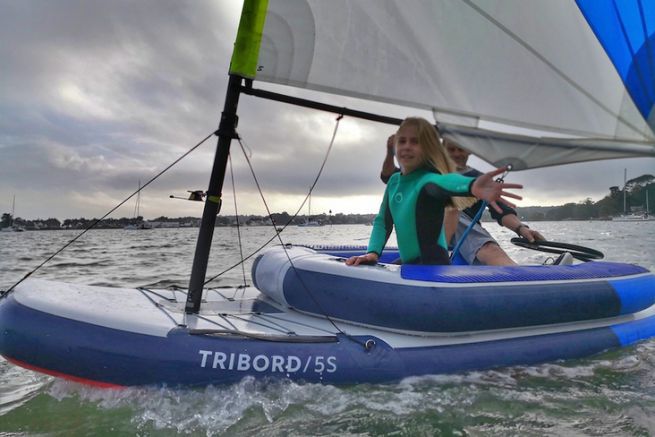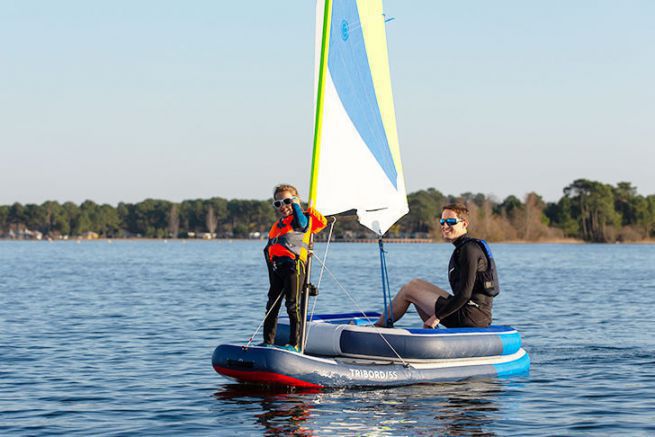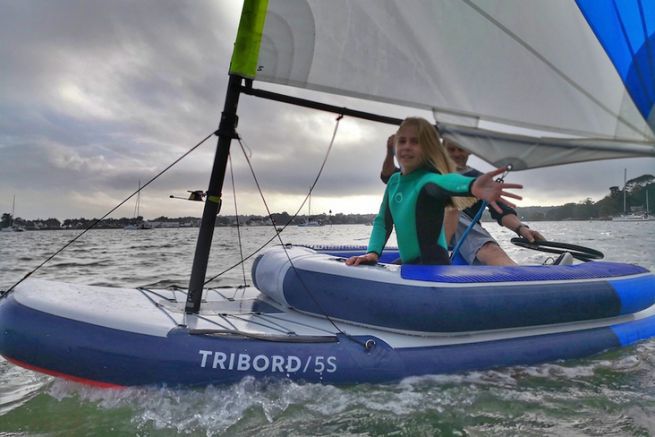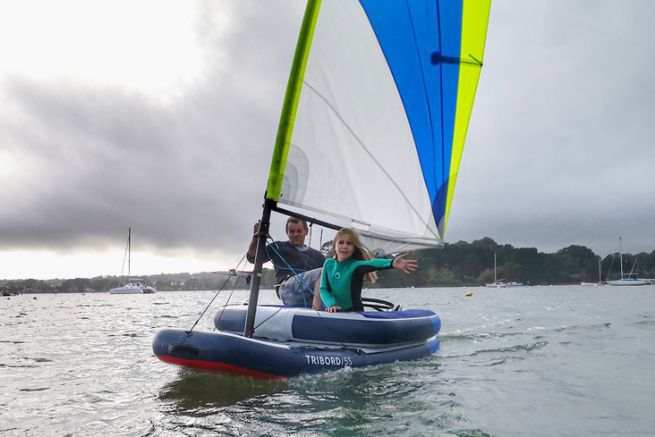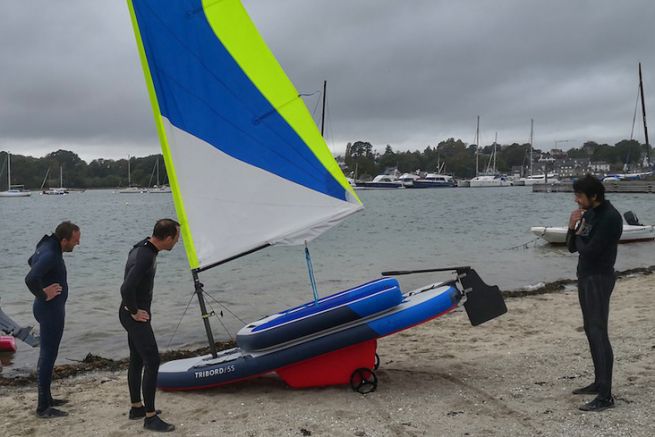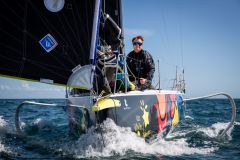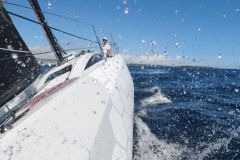Fetching a sailboat from the sports shop
Décathlon, with its Tribord brand, has designed the inflatable dinghy 5S . It is available in stores at a price of 2500 euros. Like all Decathlon products, it is extremely well placed in terms of quality/price ratio.
So we went to the closest store where the sports retailer had one of the very first copies sent out to try it out.
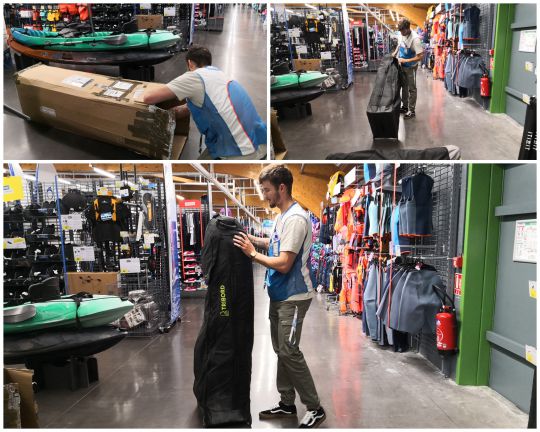
Putting your sailboat in the car and going to the beach
And yes, that's part of the concept of this boat, we can put it in the car, so we did the Twingo test. Let's admit that the Twingo is a very good car, but it still has its limits. Once the seats are lowered, you can get the 2 bags on board without too much difficulty. The heaviest of them is 30 kg and 1.60 m long.
Unfortunately in the Twingo there is only the driver's seat left. A slightly larger car will be able to carry the boat and (depending on its size) the two or three crew members that go with it. And now off to the seaside, more precisely Port-la-Forêt.

But what's in the sacs??
In the wheel bag, weighing 30 kg, you will find :
- a boat deflated and rolled over on itself
- 2 drifts
- a launching trolley
- a rudder and a tiller
- pulleys and a sheet
- a pump
- fully detailed instructions for use
In the 10Kg bag we find :
- the battened sail rolled up
- the mast dismantled in 6 parts.
- The boom
In total, the whole is only 40 kg, frankly it is not much for a dinghy able to accommodate 2 adults.
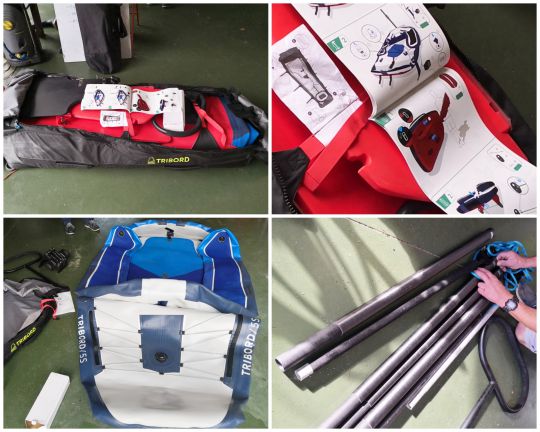
Living in Shadoks for a few minutes
We obviously start the preparation of the inflatable boat by pumping. Let's be clear, filling the volume and putting it under pressure takes a long time by pumping with the force of your arms, very long?! We can advantageously use an economical electric pump capable of filling the air volumes. The pressurization will be obtained by manual pumping. You still avoid half the effort, there will be more energy left for sailing.
Be careful, to reach the 15psi recommended by the manufacturer, you have to pump, pump for a long time and put all your weight into it, moreover the small sizes (less than 60 kg) will have difficulties to reach this pressure. The ultimate solution is an electric pump able to provide a pressure of 15psi. The ultimate solution is an electric pump capable of delivering 15psi pressure.
As far as we're concerned, with all the pumping I find the life of Shadoks not very fun ..
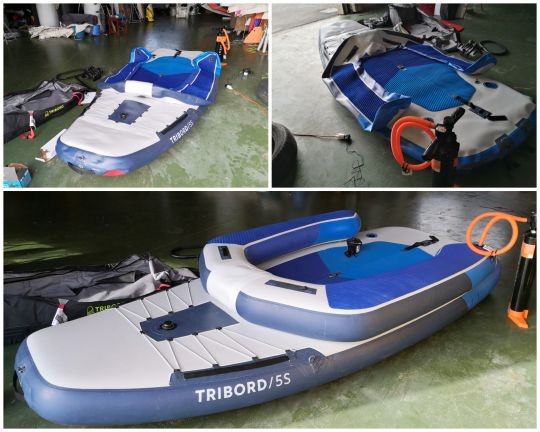
How does a big paddleboard become a small boat?
Once the platform is inflated (and I'm a bit flat), you get an impressive rigidity. The hull of the boat uses the "Dropstich" technology which has already proven itself in stand up paddle (2 layers of PVC linked together by thousands of polyester filaments).
Now that we have a hull, we can equip it with its accessories, and there aren't many of them. The 2 daggerboards fit like paddle fins. With their reinforcements, they seem quite rigid. We take advantage of this to fix the axle and the wheels which will cleverly be used as a launching trolley.
The boat is turned upright and the rudder system is installed with a kind of helmet that covers the transom and provides good support for the females. The size of the rudder blade allows it to be installed ashore, without the need for any lifting device.

All that's missing is a rigging to make it a sailboat..
Now we have to set up the rigging. The mast is an assembly of 6 carbon tubes. The section is tapered to give flexibility and bend under gusts of wind. The tubes are numbered in order to avoid confusion, the assembly is really simple..
The mast is inserted into the luff sleeve of the sail and the boom into its sleeve along the edge. The 3 battens of the sail hold a good size horn sail.
Finally, the mast is presented with its sail on its root, a sort of tenon that is embedded in the mast foot. To hold the spar, the 3 small dyneema shrouds are fixed to the hull, which are 60 cm high. Installing the shrouds is not that simple, it takes two people to do it easily.
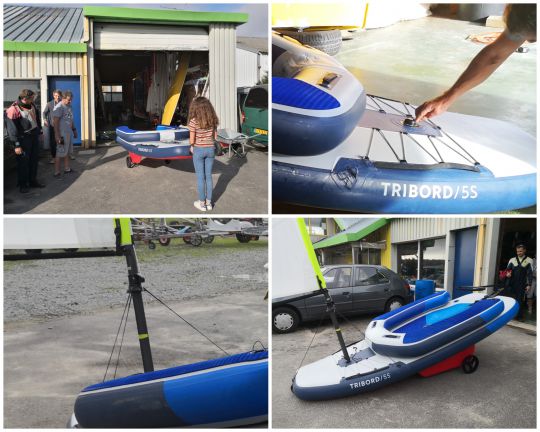
A few points of detail that may or may not be appealing
The educational weather vane is probably the most formidable innovation of this sailboat. With all due respect to the engineers who have worked on the rest of the boat, this small piece of equipment is truly a breakthrough in the world of sailing.
The engineers thought of dressing the windvane with figures to help with the sail trim. It's as simple as it is ingenious. When in doubt, the novice looks at the small drawing in front of the alidade.
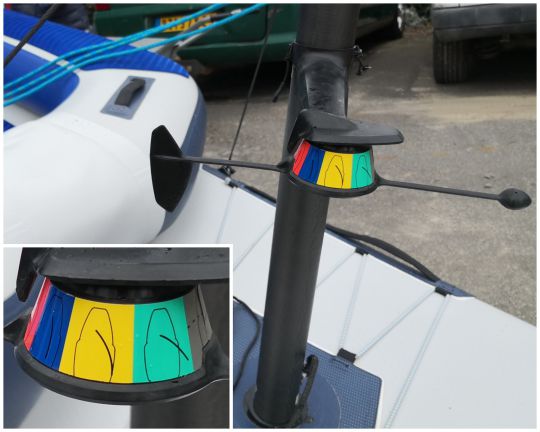
The rudder head is fitted with an insert for sliding the tiller in. It is attached by a quick-release lever of the same type found on bicycles.
Unfortunately, the shaft of this part is not made of stainless steel, there is a risk of corrosion and electrolysis with aluminium. This part must be rinsed and dried after each use.
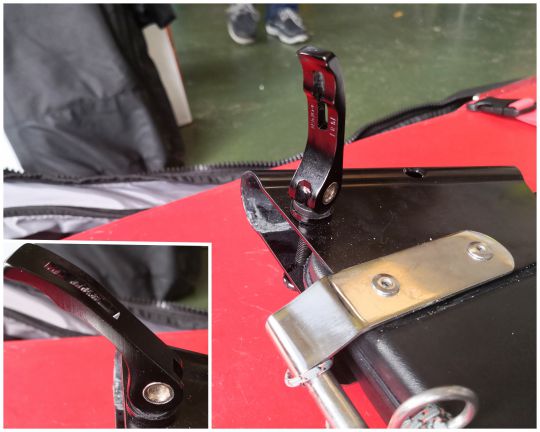
The launching trolley that attaches to the daggerboards. It's a great idea, very effective on hard ground, but on the beach it's not very convincing. Moreover, it is quite difficult to disconnect the axle from the daggerboards. But it's a good idea, maybe to be perfected.
Finally, the boat is brought as close to the water as possible, the axle is detached and the inflatable boat is carried, it's so light that it's no problem at all.
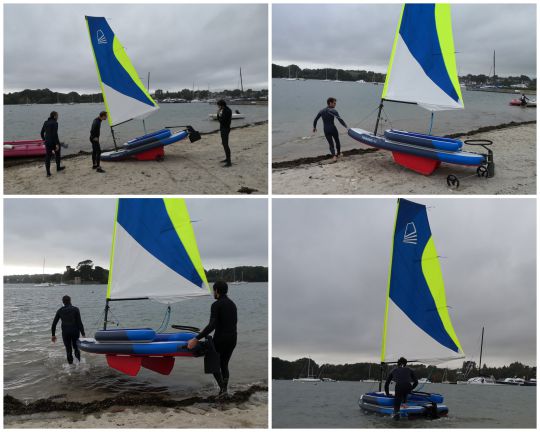

 /
/ 